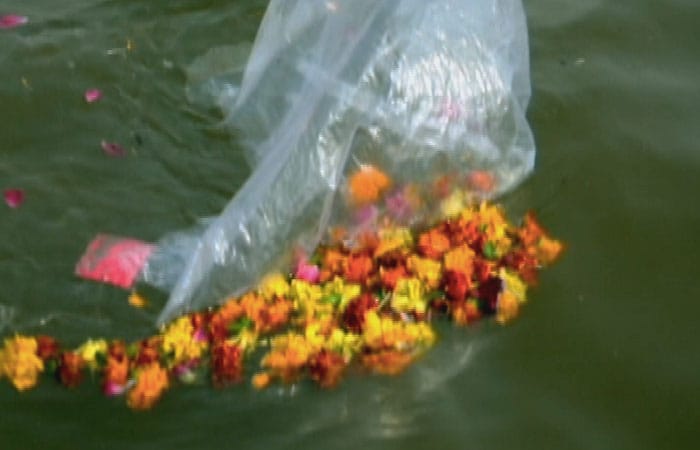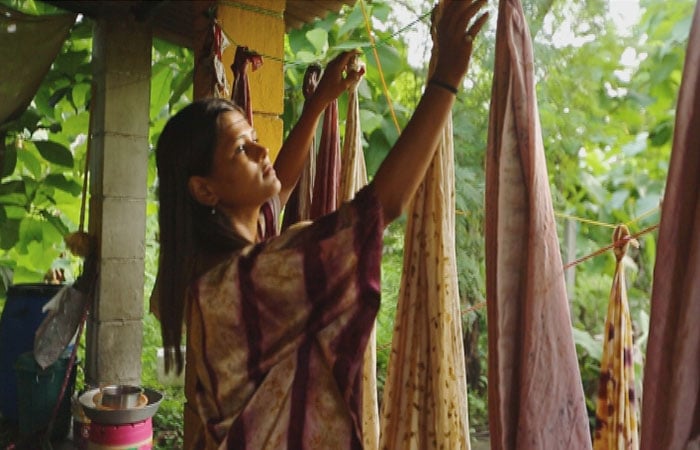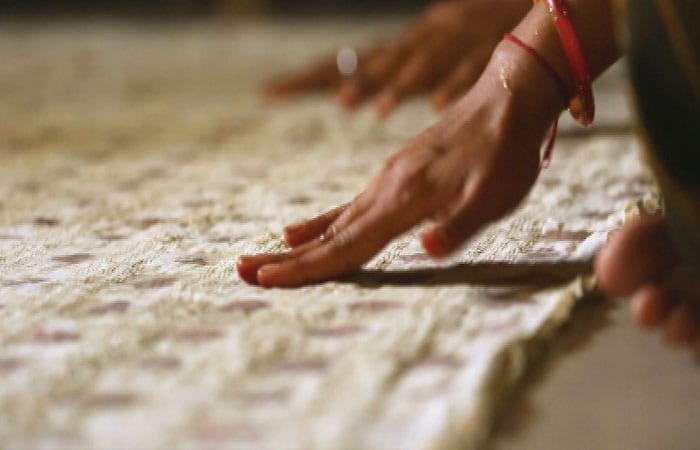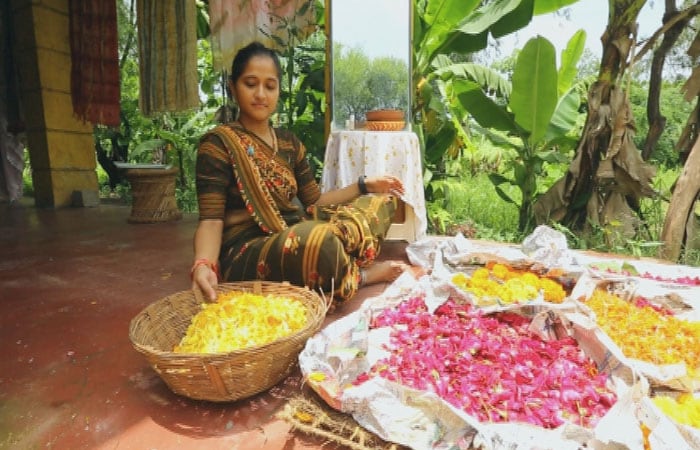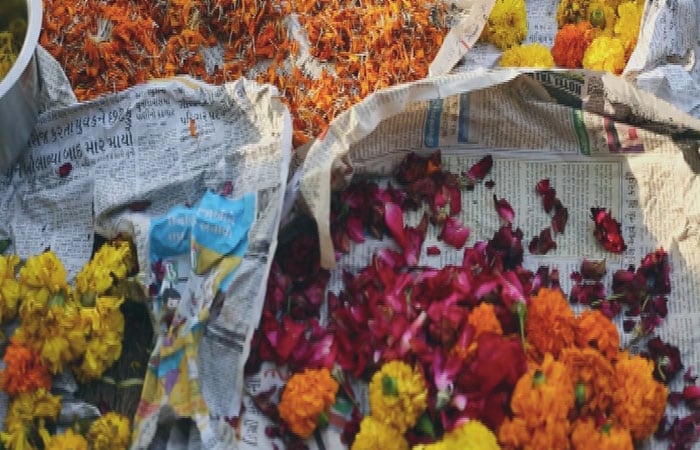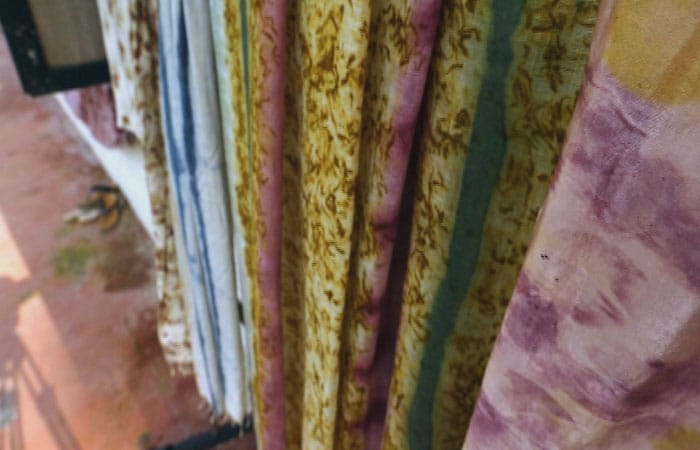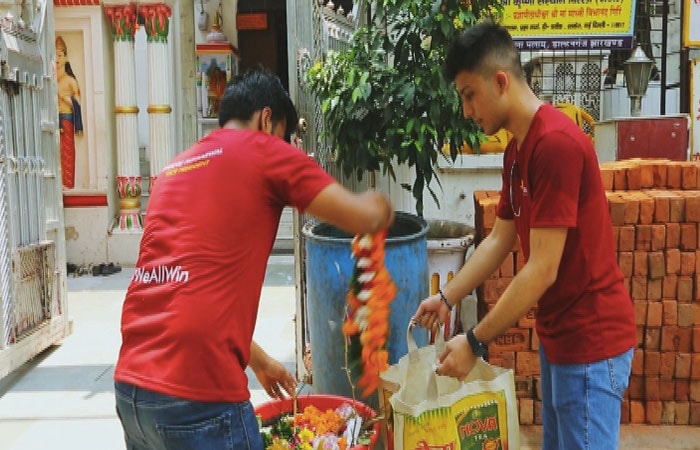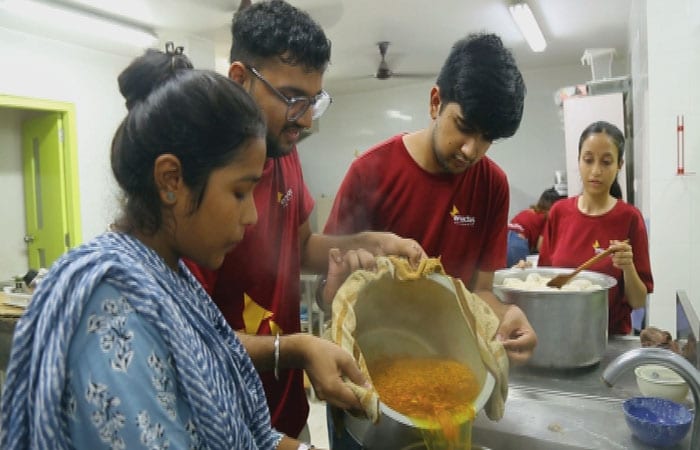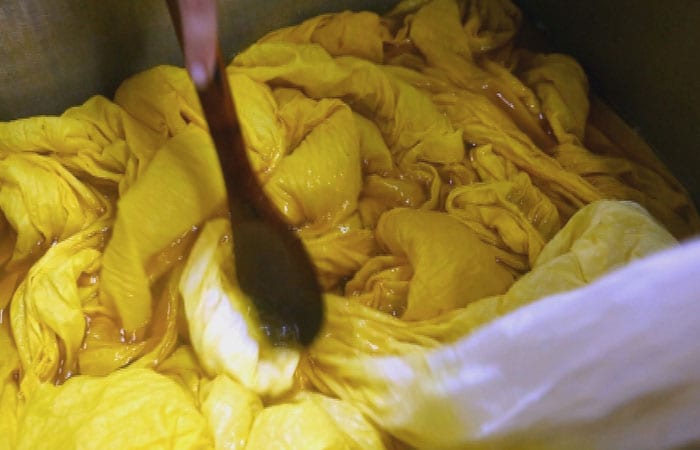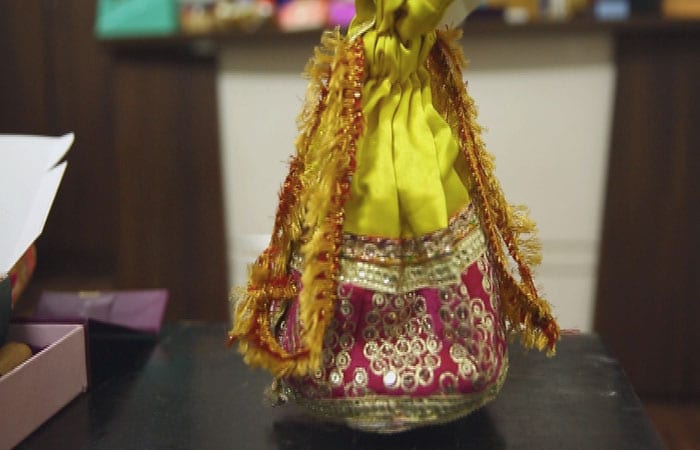How These Individuals And Brands Are Giving A New Meaning And A New Purpose To Temple Waste
No visit to a place of worship is complete without the classic temple offerings, to please and propitiate the gods. It is estimated that around 800 million tonnes of flowers are offered at temples, dargahs, and gurdwaras across the country. Often, these offerings end up as waste. But some brands and individuals are stopping temple waste from going to rivers. Instead, they are turning waste into useful resources like dyes and religious offerings.
-
As per research by Pradip Kumar Maity for the International Journal for Research in Applied Science and Engineering Technology, about eight million tonnes of floral waste is dumped into rivers and other water bodies in India every year, choking and polluting them.
-
Jigisha Shukla from Vadodara runs a sustainable clothing brand called Bageeya. Bageeya not only promotes handwork and crafts, but also gives a purpose to floral waste in their second life as natural dyes that bring colour and texture to the brand's line of sustainable clothing.
-
Apart from being biodegradable and organic, the floral dye has other advantages too. This dye isn't just good for the environment, but also for the body, mind, and soul. Jigisha explained, "In Ayurvastra, a branch of clothing science, it is said that when you wear something which is naturally dyed with herbs and flowers and if the garment is organic fabric then it rejuvenates your body."
-
Bageeya is not only turning waste into a resource, but the process followed for dying a piece of cloth is also eco-friendly. The water is used to wash utensils or mop the floor before it is discarded. The chemicals in the water are within permissible limits, and hence do not pollute the groundwater.
-
Project Palaash was started in 2019 with a vision to safeguard life underwater by tackling the problem of poor waste management in urban temples. The team collects around 300-400 kgs of flowers from temples across Delhi. on a weekly basis and takes them to the production facility, which is an NGO.
-
The team often gets rotten waste, that cannot be used in production. But they see that as a resource as well, and send it off to a composting centre. The other floral waste, fit for dyeing, is sent to natural dyeing centres. Currently, they have 5 different centres, and are in the process of setting up two more.
-
Temple waste isn't just flowers. Often old clothes, offered to the gods, are also dumped into our rivers - too ‘sacred' to be disposed of as garbage. Certain rituals also demand the offering of clothes, milk, flowers, by floating them down a river or into a lake.

